The Meta-Retrospective: How To Get Customers and Stakeholders Onboard
Take a look at the meta-retrospective, a great way to understand and visualize the issues facing your extended Scrum team.
Join the DZone community and get the full member experience.
Join For FreeA meta-retrospective is an excellent exercise to foster collaboration within the extended team, create a shared understanding of the big picture, and immediately create valuable action-items. It comprises of the team members of one or several product teams — or representative from those — and stakeholders. Participants from the stakeholder side are people from the business as well as customers.
Meta-retrospectives are useful both as a regular event, say once a quarter, or after achieving a particular milestone, for example, a specific release of the product. Read more on how to organize such a meta-retrospective.
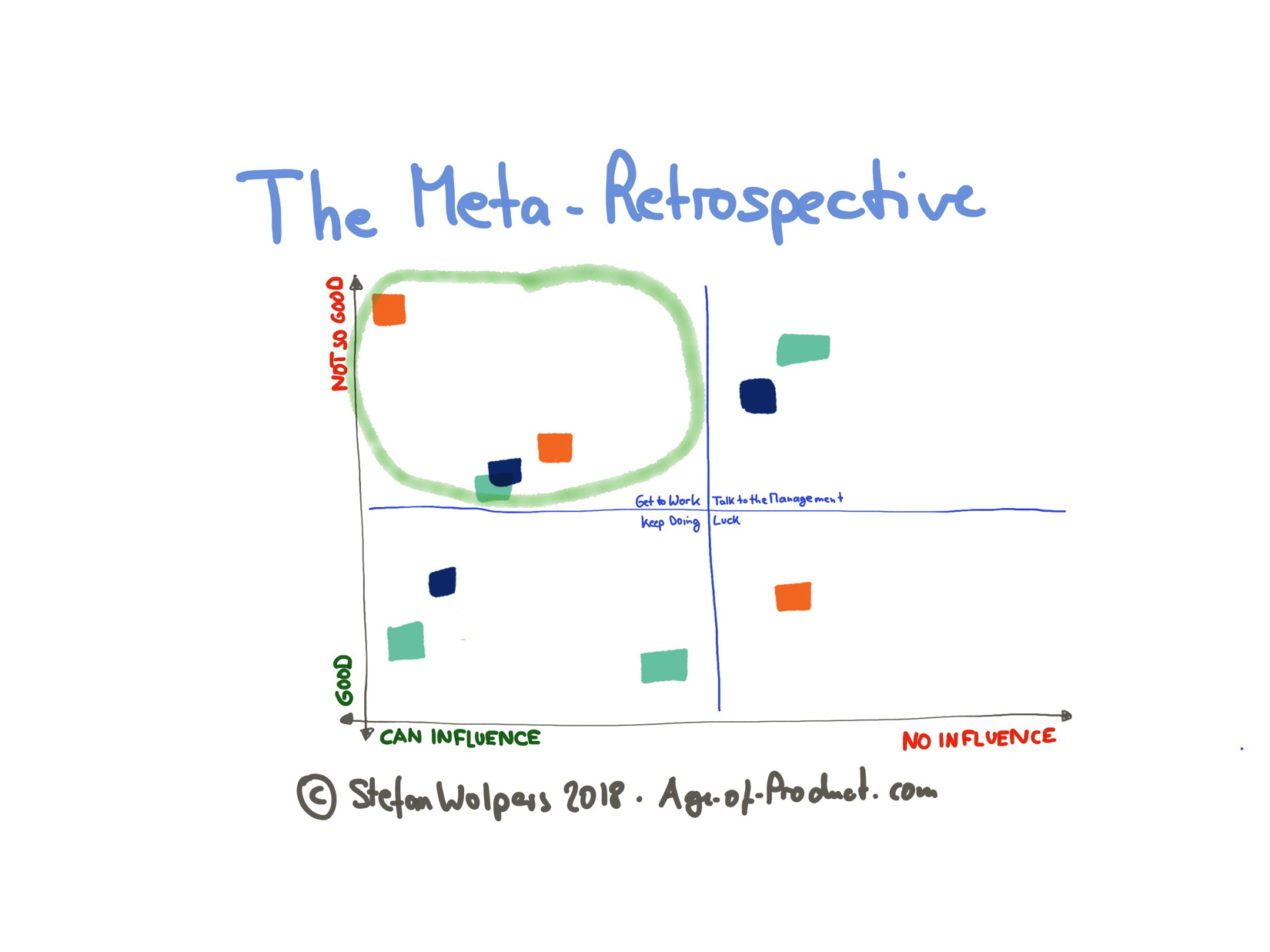
How to Run a Meta-Retrospective
The meta-retrospective format I describe here is based on Zach Bonaker’s WADE-matrix, extended by an additional practice at the beginning of the retrospective. To frame the level of (necessary) openness of the upcoming conversation, I run a short exercise bringing the Scrum values back into the hearts and minds of the attendees. After all, we are organizing the meta-retrospective to also address the elephants in the room.
The meta-retrospective itself does not require any knowledge of Agile practices and is hence suited for practically everyone. This format can easily handle 15-plus people, provided the room is large enough. It works best when there is space available where people can get together for discussions. Also, we need at least one large whiteboard in the room as most of the work will happen initially on this wall.
The Scrum Values Exercise
Running the Scrum values exercise is simple:
- Ask the participants to pair up and identify within three minutes their choice of the three most important traits that will support collaborating as a team. (I usually provide an example of what is not helpful such as yelling or pointing fingers.)
- Then ask every pair to introduce their choices to the rest of the attendees and put them on the whiteboard. If similar traits are already available, I ask to cluster them.
- Once all stickies are on the whiteboard, the facilitator steps forward and explains what Scrum values are about and why they are helping to guide a team to accomplish its task. (Make sure that you mention the topic of prospective elephants in the room that need to be addressed in a civilized manner if Kaizen shall prove to be more than just a buzzword in your organization.)
- The facilitator then puts five stickies with the Scrum values written on them — courage, focus, commitment, respect, and openness — onto the whiteboard and asks the attendees to align their findings with the Scrum values.
Once that is done, you are good to go with the meta-retrospective.
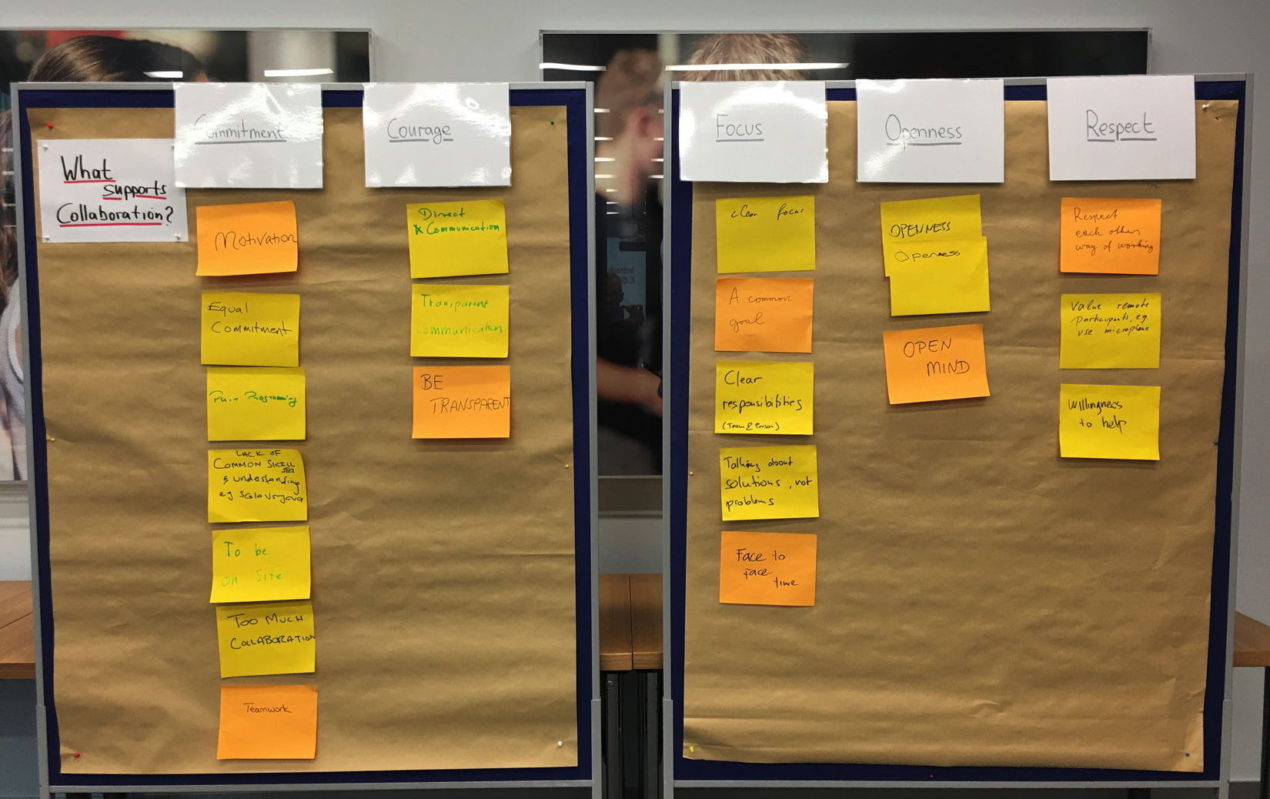
The Meta-Retrospective Exercise
Start the meta-retrospective by drawing the first axis onto the whiteboard and note that the axis represents a continuum. Then ask the attendees to pair up again but choose a different partner than before.
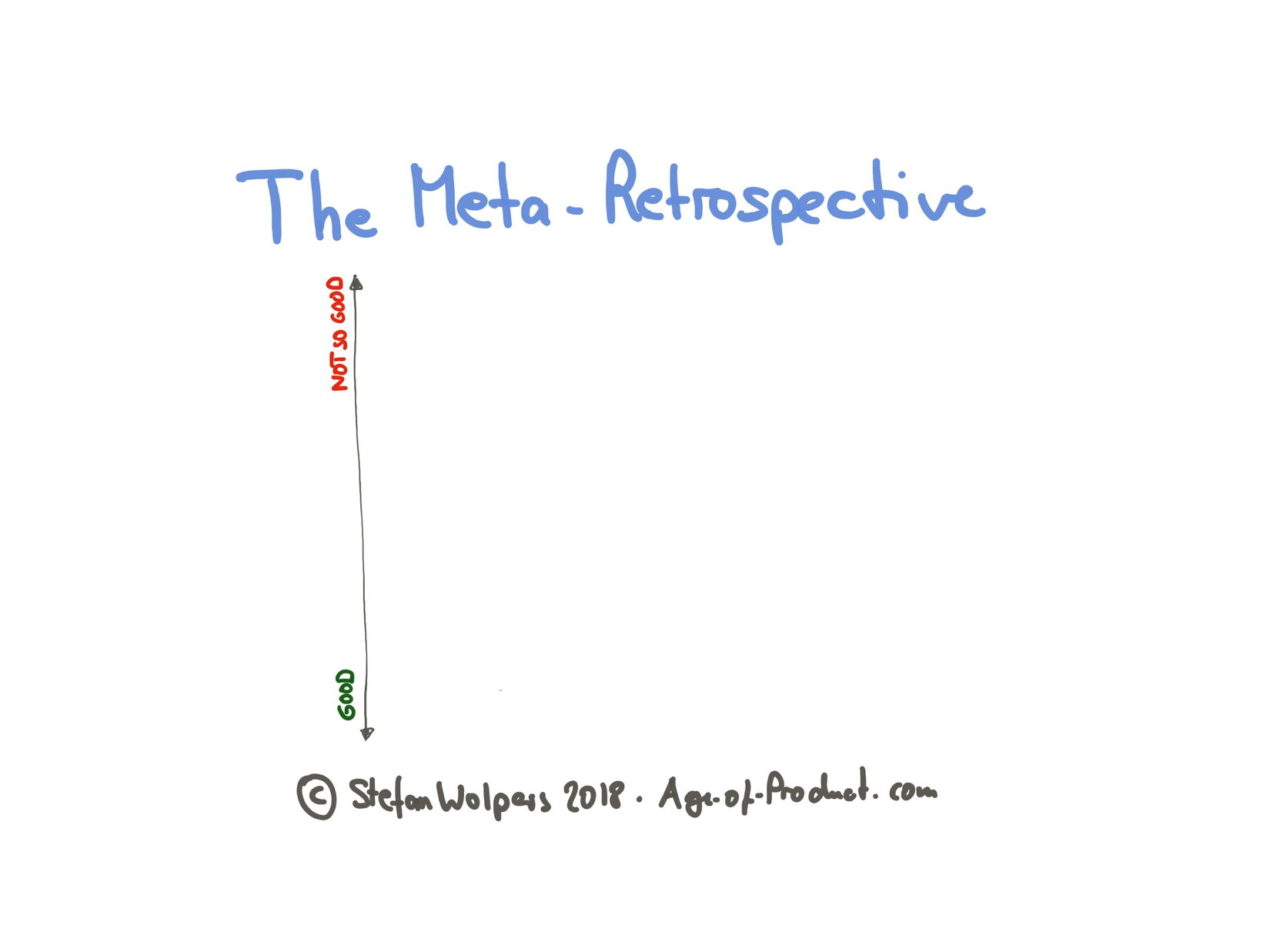
Now ask them to pick their three most important learnings looking back. Time-box this creation phase to 3-5 minutes. After the stickies with the learnings are available, ask every pair to introduce them to the rest of the attendees and put them on the whiteboard. (Again, they shall cluster stickies where appropriate.)
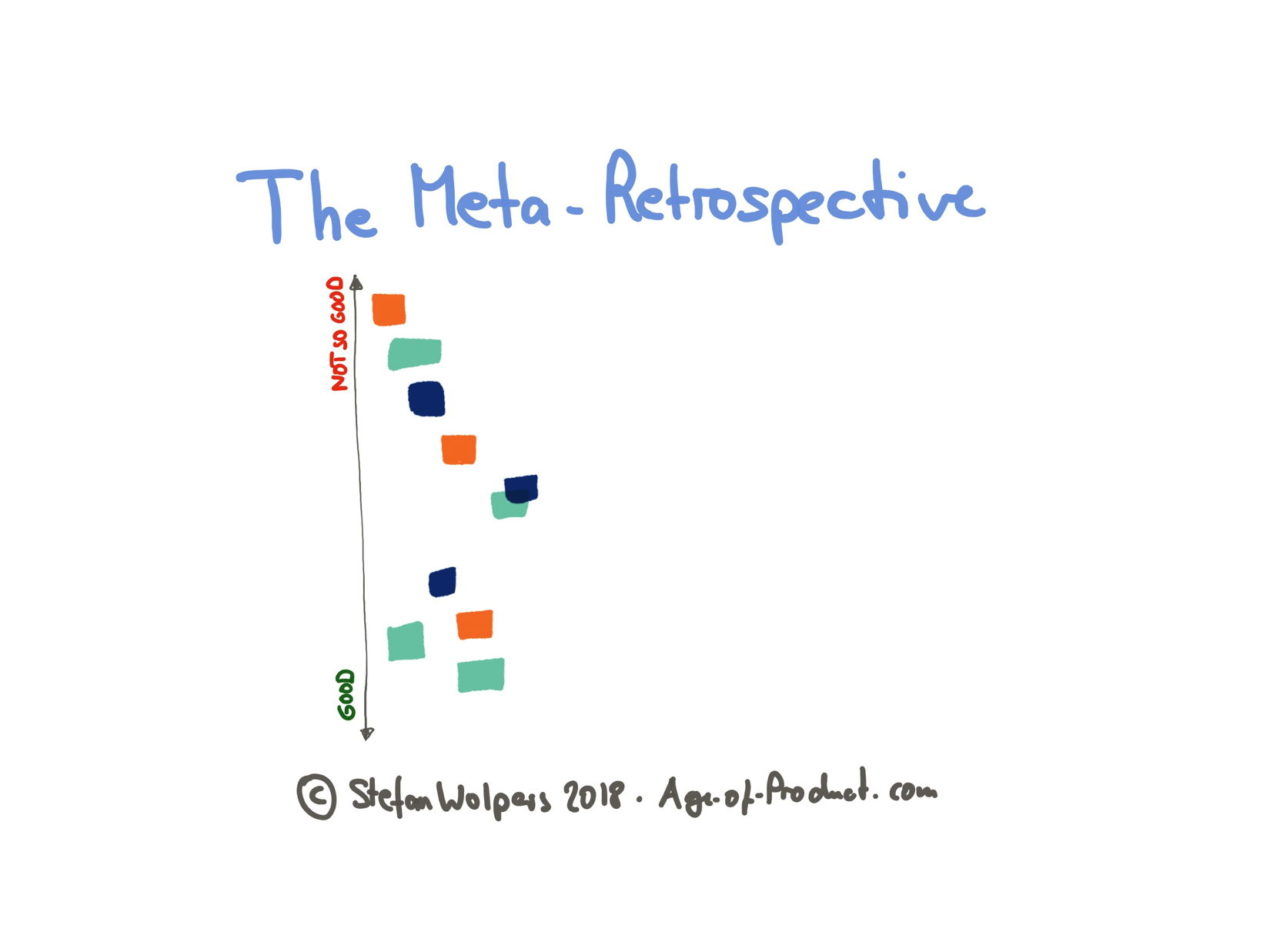
In the next step, introduce the second axis—the “influence” axis—which again is a continuum.
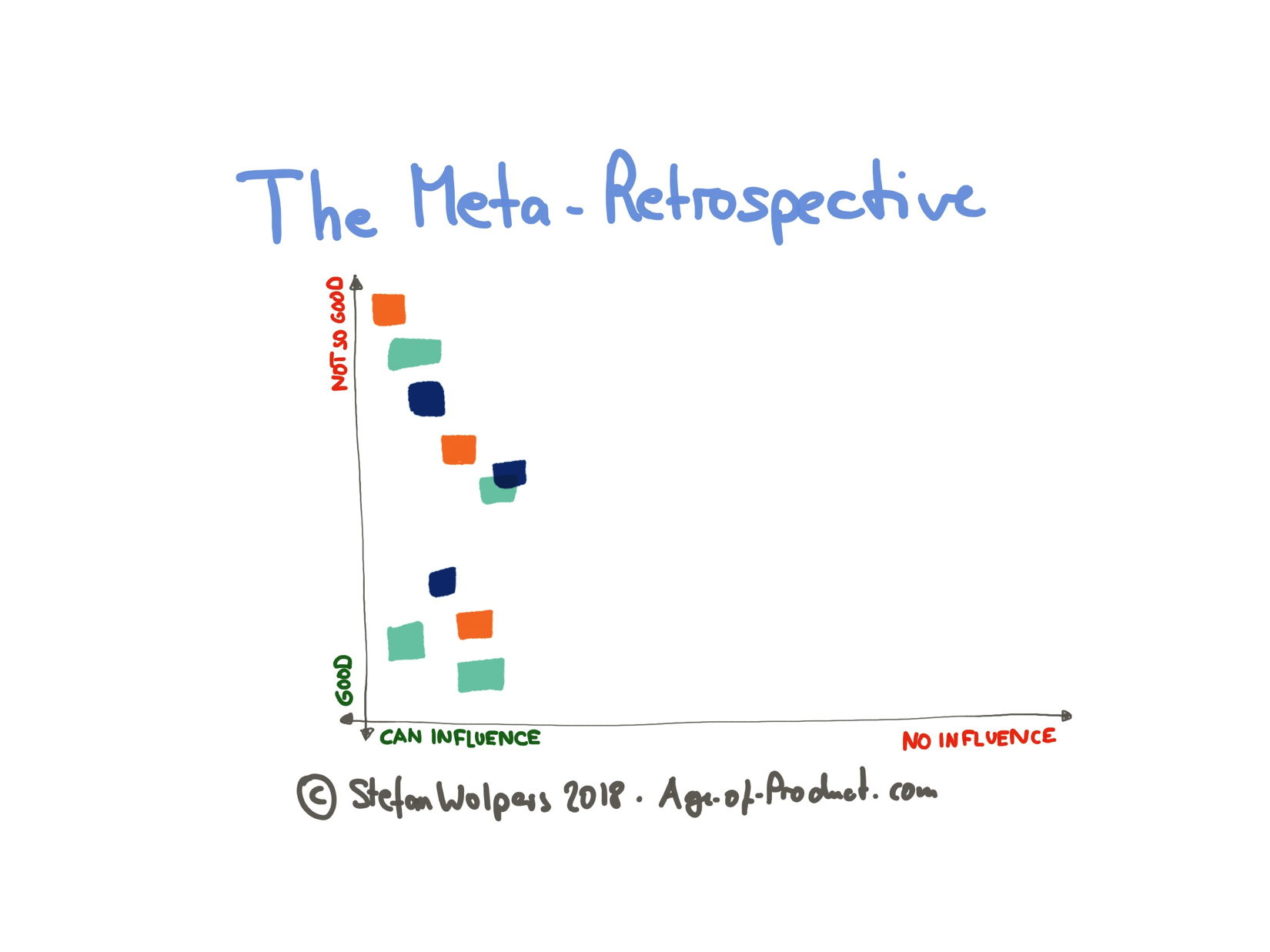
Then ask the participants to align all stickies on the whiteboard also with the second axis. You can stop this once stickies are no longer moved on the whiteboard.
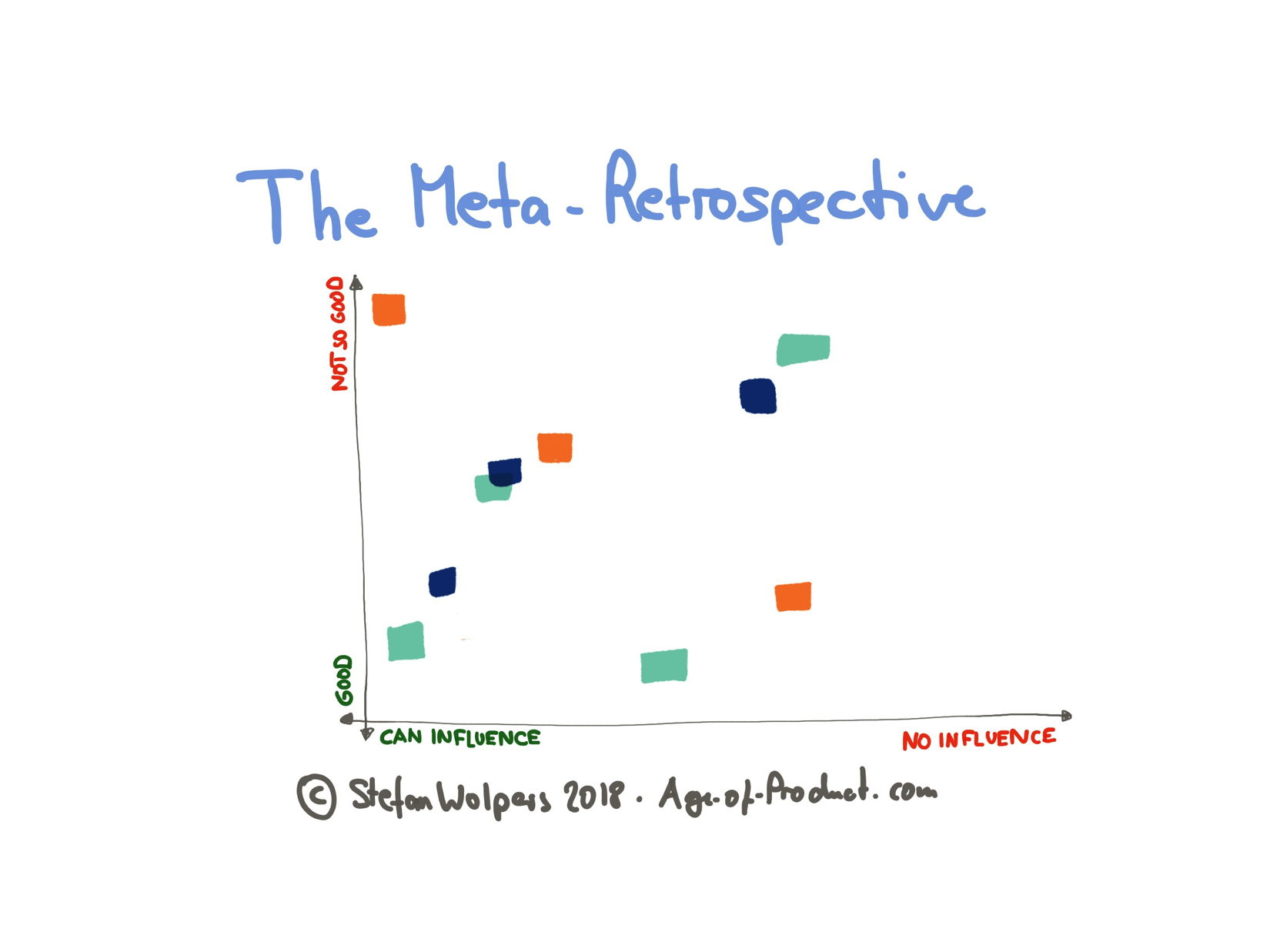
Now it is time to turn the pattern into a 2-by-2 matrix and label the four quadrants accordingly:
- Get to work: This is the area of immediate impact.
- Talk to the management: These issues are impeding you; escalate them to the management.
- Luck: That went well but do not invest any effort in here.
- Keep doing: Nothing to change here at the moment.
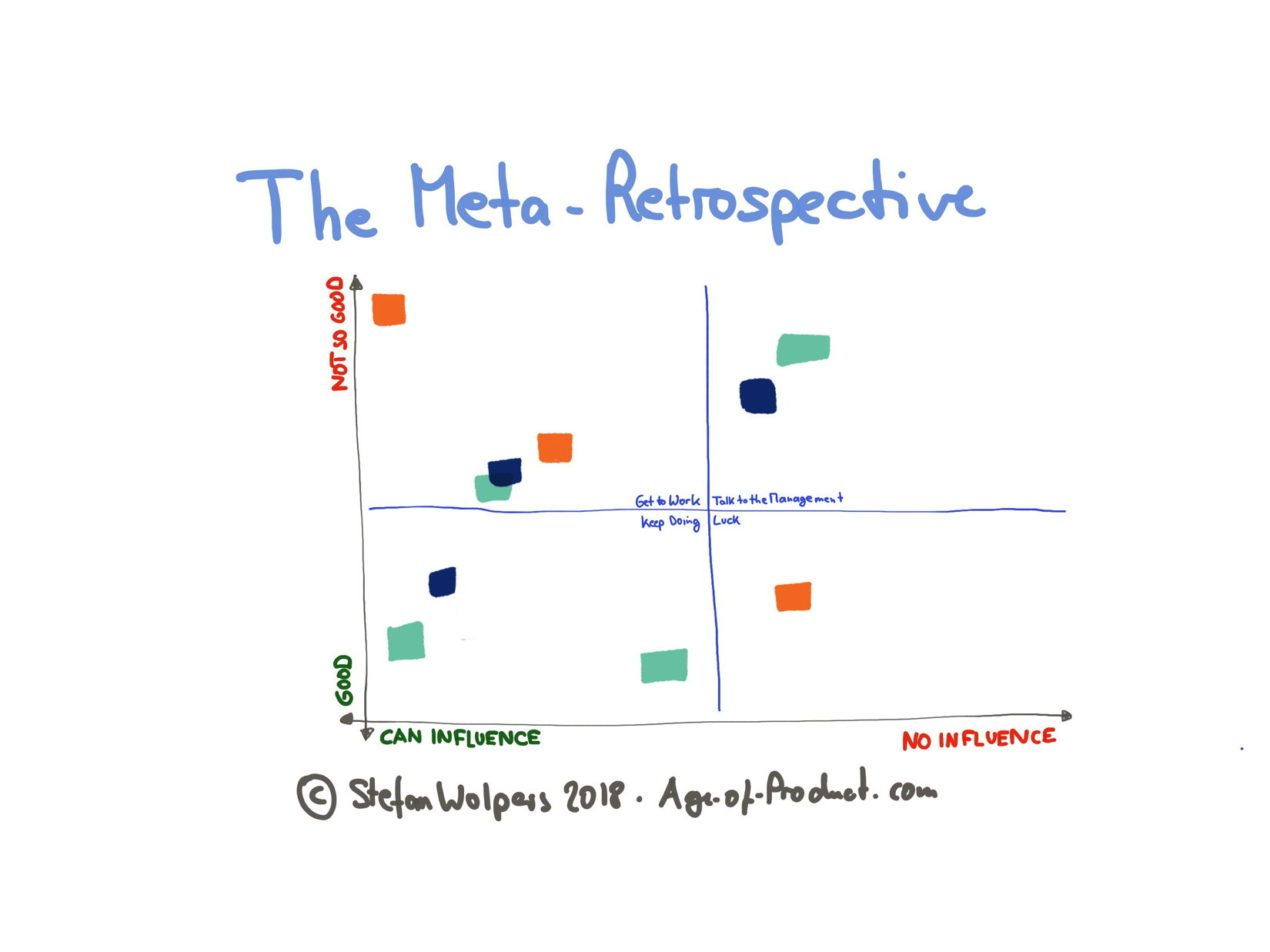
For the next step, focus on the upper left quadrant — “Get to Work”— and ignore the bottom two quadrants. Probably, there will also be time to address the upper right quadrant. (“Talk to the management.”) Start by moving the stickies from the upper left quadrant to a different part of the whiteboard and prepare them for a dot-voting to figure out the ranking of the issues. (I usually issue 3-5 dots to each attendee for this purpose. The voting may take up to five minutes.) Once the voting is accomplished, generate some action-items by running a lean coffee-style discussion based on the ranked issues.
Conclusion
Running a meta-retrospective is an excellent exercise to foster collaboration within the extended team, create a shared understanding of the big picture, and immediately create valuable action-items. Best of all: it takes less than two hours to make the ideas of avoiding ‘Muda’ and practicing ‘Kaizen’ tangible to everyone.
Agile Transition – A Hands-on Guide from the Trenches
The Agile Transition – A Hands-on Guide from the Trenches e-book is a 212-page collection of articles I have been writing since October 2015. They detail the necessary steps to transition an existing product delivery organization of over 40 people strong to Agile practices.
Published at DZone with permission of Stefan Wolpers, DZone MVB. See the original article here.
Opinions expressed by DZone contributors are their own.

Comments